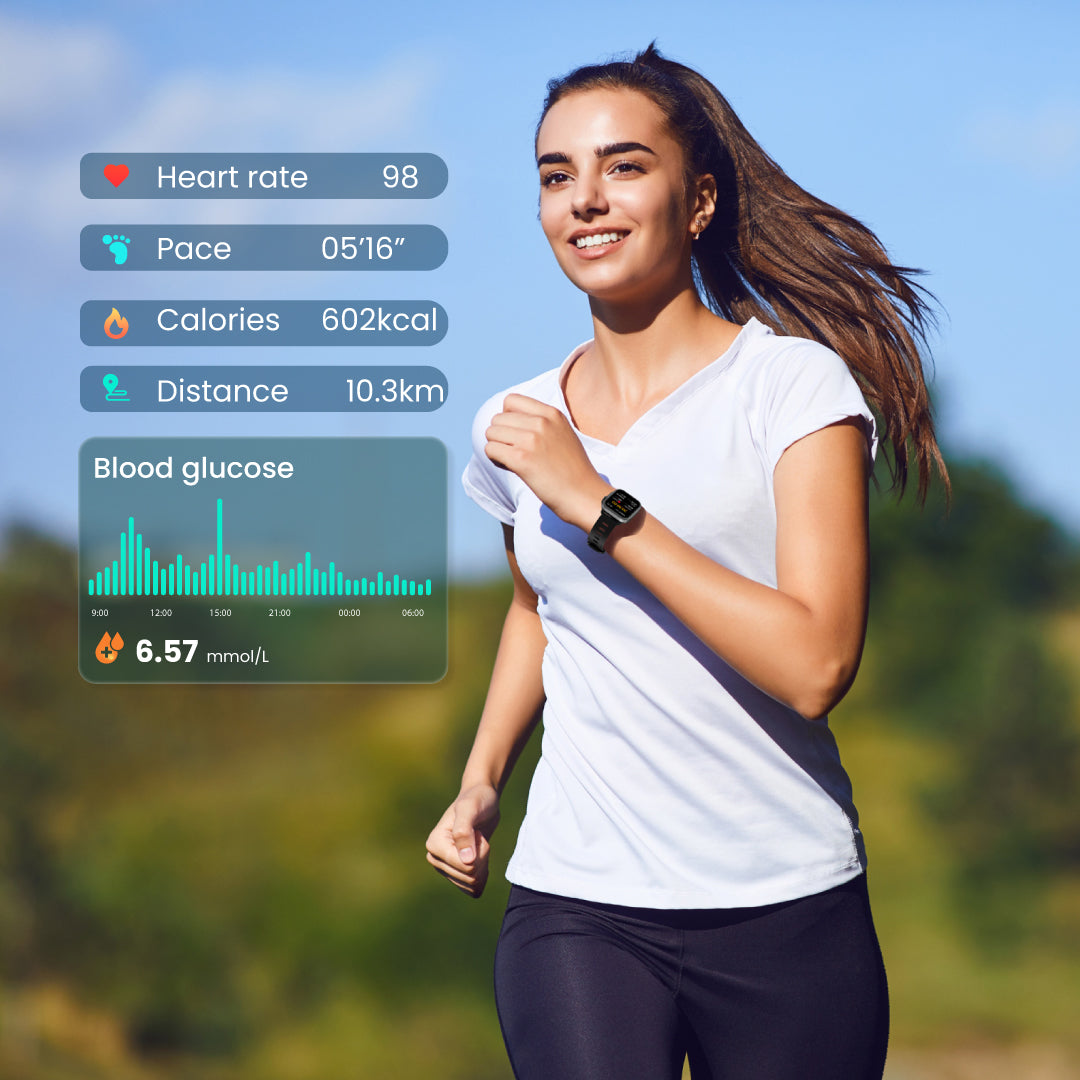1. ECG Smartwatch and body composition test
The smart watch is equipped with electrocardiogram test function, with electrode configuration. Add our body composition algorithm to realize the measurement of body composition;
2. Basic principles
Using bioelectrical impedance technology (BIA), based on bioelectrical impedance, when we introduce weak AC electrical signals into the human body, the current will flow along the body fluid with low resistance and good conductivity.
The amount of moisture determines the conductivity of the current path, which can be expressed by the measured value of the impedance. A large number of experimental data show that there is a statistical relationship between the resistance characteristics of the human body and the body composition.
This is the principle of body composition measurement based on bioelectrical impedance technology.
3. Improve accuracy
Since the composition of the human body is not evenly distributed in each part, we will combine the five values of height, weight, age, gender and impedance, and the combination of multiple values makes the measurement results more accurate.
So to get more accurate data, please enter the correct BMI on the APP.
4. Body composition and blood connections
-- Real-time ECG health trend warning instructions
First, there is a close relationship between heart rate variability and emotion, which is described as follows
1. Autonomic nervous system control: Heart rate variability is regulated by the autonomic nervous system, including the sympathetic and parasympathetic nervous systems. These two systems play an important role in the regulation of emotional experience and stress response.
2. Healthy and balanced heart rate variability: High heart rate variability is often considered an indicator of health and balance. It shows the heart's ability to adapt to different environments and stressors.
3. Negative emotions and heart rate variability: Negative emotions (such as anxiety, depression, and anger) are associated with lower heart rate variability. When people experience negative emotions, heart rate variability may decrease, indicating that the balance of the autonomic nervous system is affected.
4. Positive emotions and heart rate variability: In contrast, positive emotions (such as happiness, relaxation, and contentment) are associated with higher heart rate variability. Positive emotions promote balance in the autonomic nervous system and increase heart rate variability.
5. Stress response and heart rate variability: Heart rate variability can also reflect an individual's response to stress stimuli. When confronted with a stressful stimulus, heart rate variability may be reduced, which may indicate that the autonomic nervous system is in a hyper state.
二. How do we get health trends
Through real-time ECG data, we obtain the current accurate heart rate data and HRV data, QT interval and other ECG signals, combined with our innovative algorithm to instantly estimate the heart health and current stress and fatigue index.
The above functions are health exploration functions and are not used as medical diagnosis.



